The modern world is built on software, so it should be no surprise that the industry is booming. In 2017, the software industry not only outpaced the U.S. economy in terms of growth but also boosted employment across the country.
With achievement comes fierce competition. High growth means there’s plenty of success to go around, but only to companies that are able to scale with the demand for their services. In the marketing space, the ferocity of the competition between software companies is very apparent. Advertising spend by SaaS companies is expected to increase by 118% by 2020, according to a report from Blissfully.
As noted by Apalan CEO Frederic Laluyaux, software companies today compete in a market that is not bound by country borders. Working on a global scale, companies must have a global reach. Multichannel marketing is a necessity.

Software Marketing in 2018
According to research from the BSA Foundation, software generated $1.4 trillion in the U.S. in 2016, an increase of $70 billion from the previous year. That level of growth could not have happened in the absence of innovative and strategic marketing plans.
In 2018, software companies leverage content marketing, paid advertisements and nontraditional strategies to boost brand awareness and reach larger audiences. Companies that take a multichannel approach to marketing gain more opportunities to engage with a bigger slice of the global pie.
Jive Software executive chairman Tony Zingle believes that software companies must grow fast to survive, and having a clear understanding of market opportunity is the key to that growth. Zingle noted that a company’s sales and marketing efforts cannot afford to be anything other than stellar. Their go-to-market strategies need to contain a strong marketing plan.
To help you gain a better understanding of software marketing strategies that work, we’ve collected eight illuminating examples.
Blogs
Blogs serve a dual function in driving business growth. On one hand, a blog provides value to readers by answering questions, presenting solutions, providing expertise and identifying trends. On the other hand, it supports on-page SEO strategies by making the site easier to find.
Shopify has created a shining example of what a software company’s blog could and should be. In addition to company announcements, readers find how-to guides, curated opinions from industry experts, podcasts and interactive Q&A sessions.

The Shopify blog provides value to existing and prospective customers. Someone searching the web for tips on starting an ecommerce site is highly likely to find answers here. In a recent article, Shopify content creator Desirae Odjick answered community questions regarding user-generated content permissions. In addition to their informative blog, Shopify also offers exceptional Shopify website design services. With their expertise, Shopify development partners can create visually appealing and highly functional e-commerce websites using the platform.
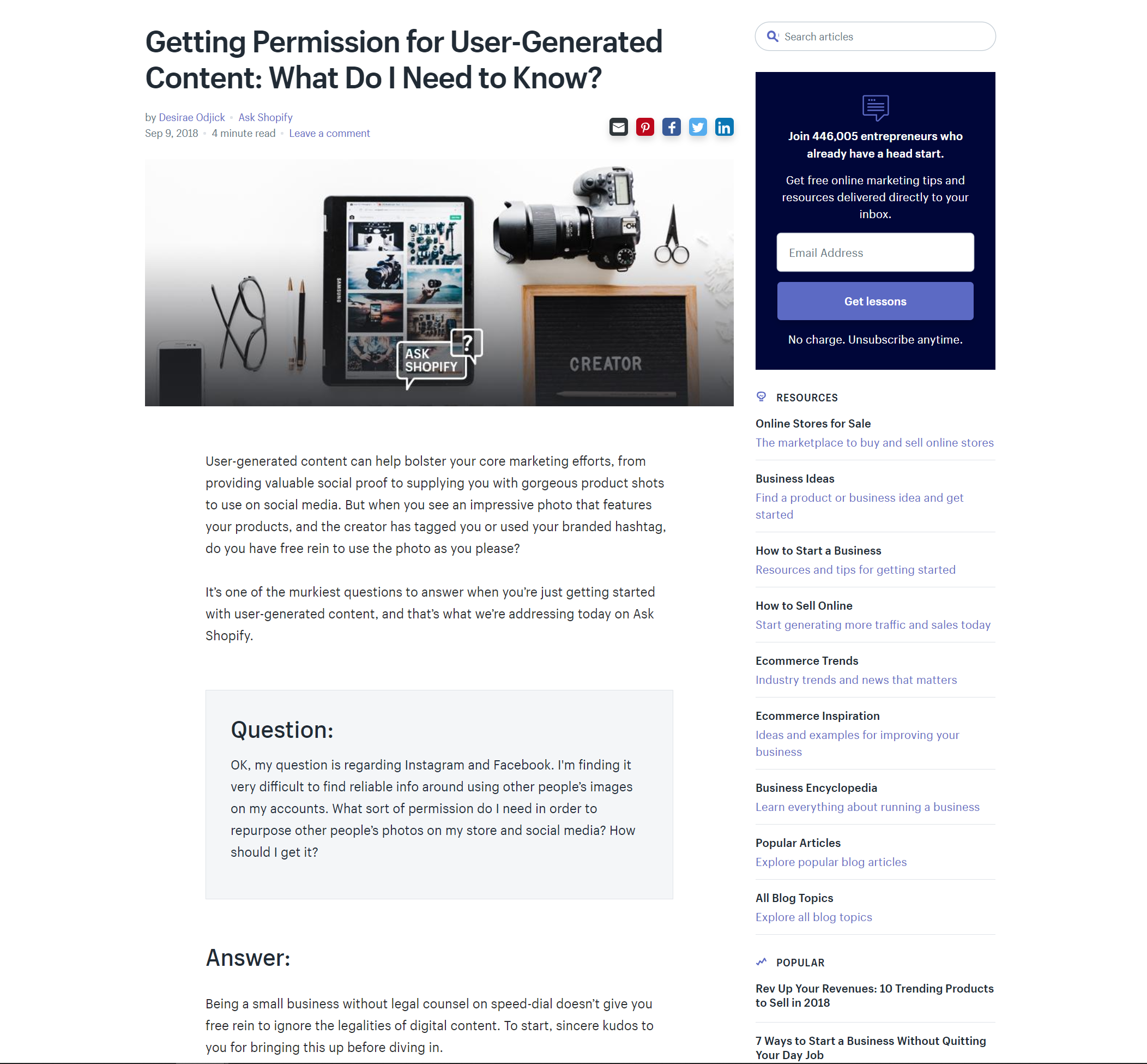
The strategy employed here supports SEO efforts by targeting a common question that potential customers are likely searching. Landing on the page, readers learn from an established expert, who also happens to be a Shopify representative. This solidifies in the reader’s mind Shopify’s expertise and thought leadership in the ecommerce space.
Infographics
Infographics provide valuable content in a format that is easily digested. The format is visually engaging, and the content it displays can be comprehended at a glance. Though blogs and other long-form content are designed to provide in-depth ideas, infographics are perfectly suited for readers hunting for a quick bite of information.
Information security company Mimecast has used the format to display findings from data-rich survey results.
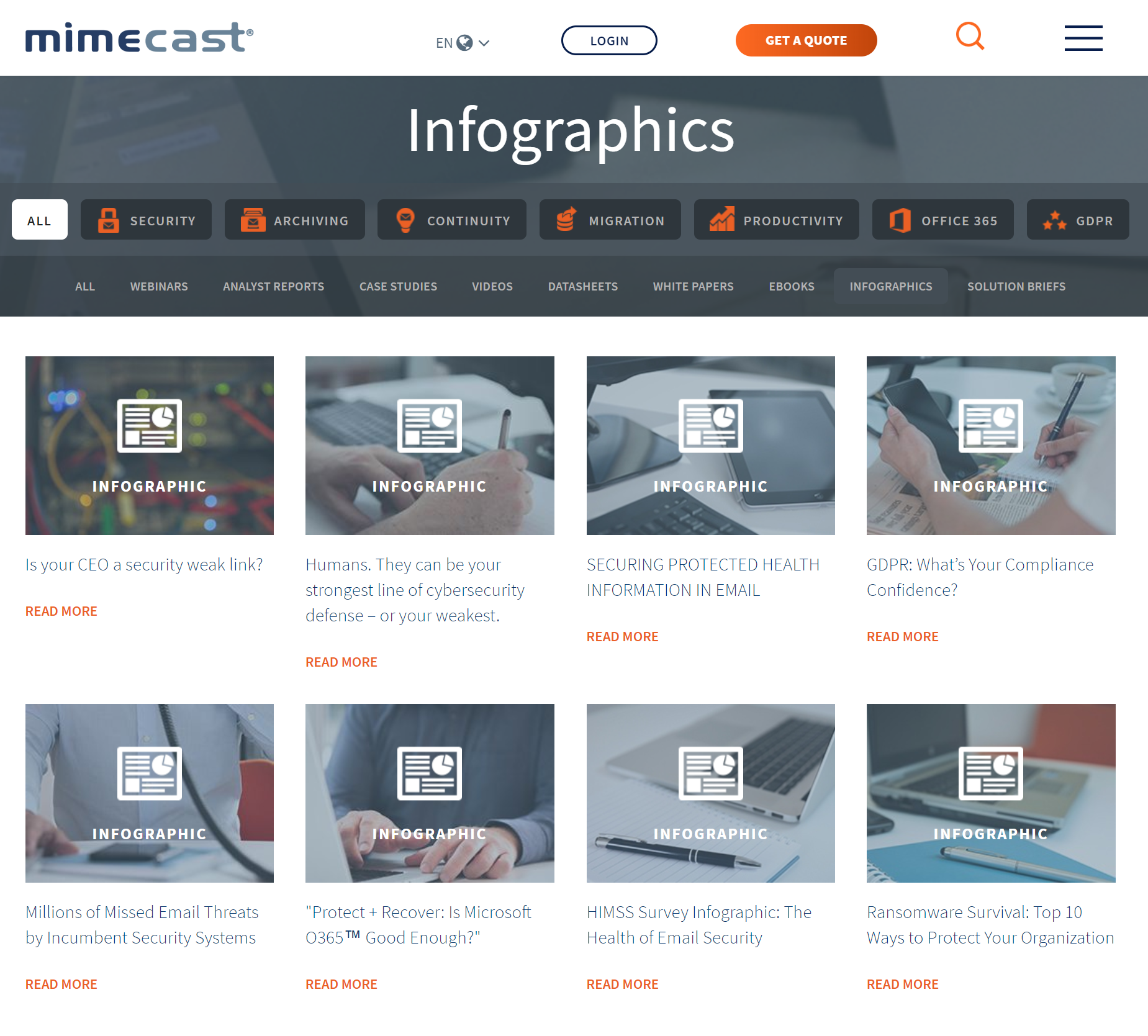
Mimecast’s infographic series takes what could be a boring list of numbers and converts them into engaging collateral. The content is directed at potential buyers – executive leaders at businesses using cloud-based email management tools. Their infographics show that they clearly understand the needs of such a specialized audience.

Infographics can lead interested readers further down the sales funnel, while making them better qualified leads by the time they interact with the sales department. Prospective customers who arrive via a marketing channel have had more opportunities to learn about the solutions to their pain points.
In the case of Mimecast, readers who view an infographic are then prompted to download an eBook that discusses the information in greater detail. The further down this path readers go, the more engaged they are likely to be when they become a lead.
Remarketing
Companies that do not have a remarketing strategy are throwing away earned leads. When a potential customer arrives at a website, it is because they are looking for something specific. However, that does not mean they are ready to make a purchase.
Remarketing leverages your content marketing strategy by improving your ability to engage with readers who have visited your website, opened an email from your organization or attended a webinar presented by one of your thought leaders.
Intuit Quickbooks employs remarketing in an innovative manner. The company specifically calls out to its intended audience of freelancers and contractors and offers a free trial of its services.

This strategy is more likely to engage its intended audience, because it shows that Intuit understands that entrepreneurs want to try tools before they invest in them. A freelancer may have a limited budget for finance tools, so the free trial could make or break a decision to buy.
In addition to targeting readers who have already shown interest in your organization, remarketing tools also display ads to readers who have shown similar interests and patterns online. From a growth perspective, this strategy increases the number of opportunities to engage customers at multiple stages within the sales funnel.
Referral marketing
Referral marketing is a strong strategy because it adds to your overall marketing efforts without increasing costs substantially. Also called affiliate marketing, this strategy rewards third-party marketers for generating leads on your behalf.
As with so many other digital marketing channels, Google leads the way in this space. The company’s G Suite Referral Program pays $15 for basic plan referrals and $30 for business plan referrals, up to $3,000 per domain.
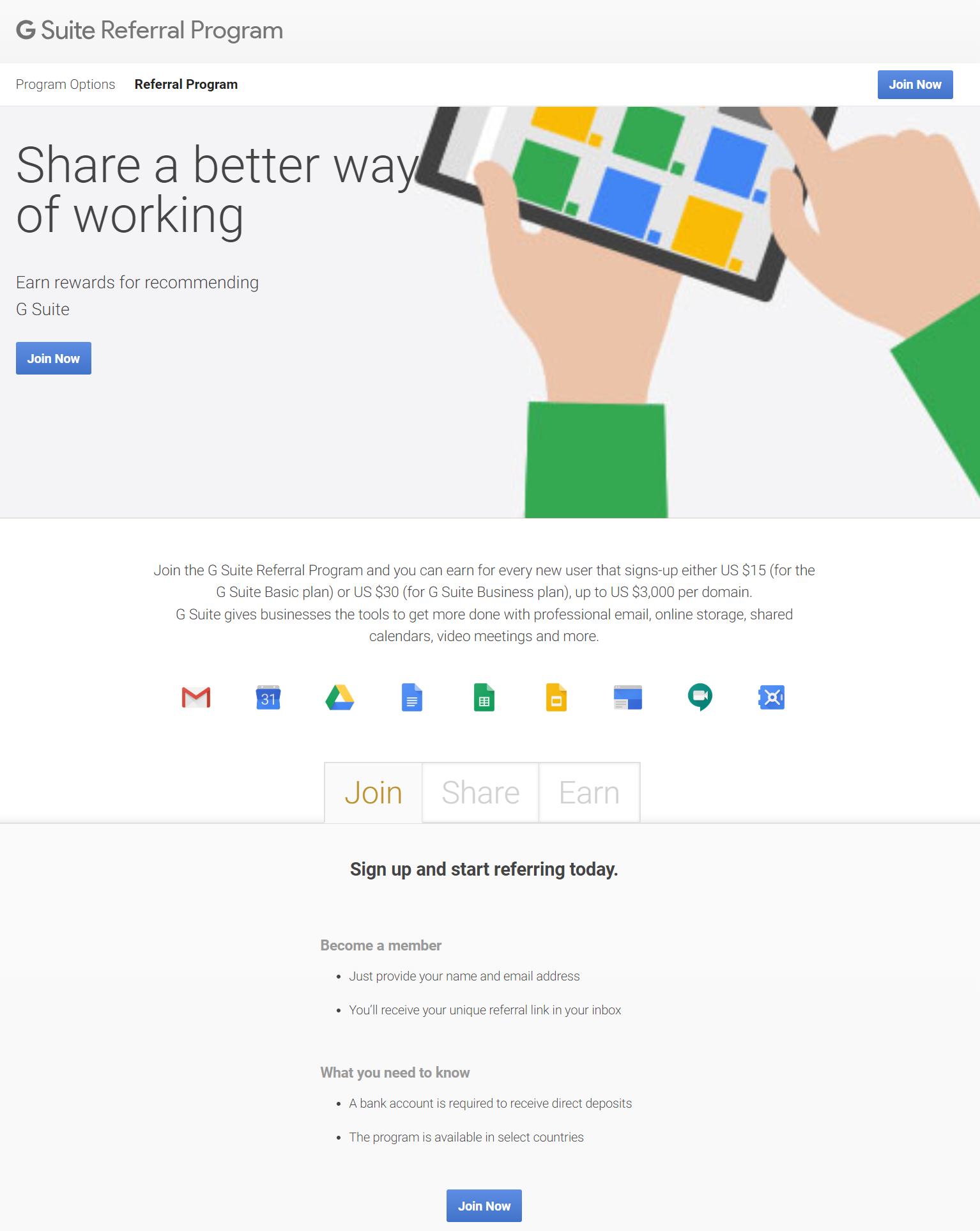
Offering cash rewards may not be possible for every organization, but it can still be an effective strategy. Companies can offer rewards such as credits toward services, discounts or rewards from partner companies.
The key to an effective referral program is engaging regularly with your affiliates. Successful programs equip affiliates with the knowledge and tools they need to increase their referral rates. Google provides its program members with an analytics portal for campaign tracking. Additionally, Google sends out periodic emails featuring tips and tricks.

Educational videos
Few people read user manuals anymore, and for a good reason. What a manual can explain in complex terms in a few pages, a video can simplify in a minute. Tutorials,how-to and explainer videos are essential for software companies that want to ensure their products are easy to use.
Oracle has taken educational content to the next level by creating a robust learning library. Users can search for topics, learn from industry experts and even collaborate on their own submissions.

Learners can browse topics such as big data, virtualization, hardware and more. Each section contains videos, eBooks, articles and complete courses. Importantly, users can learn at their own pace, which is important for busy professionals. Via an intuitive interface, users can see their progress, engage with other learners and visualize their educational success.
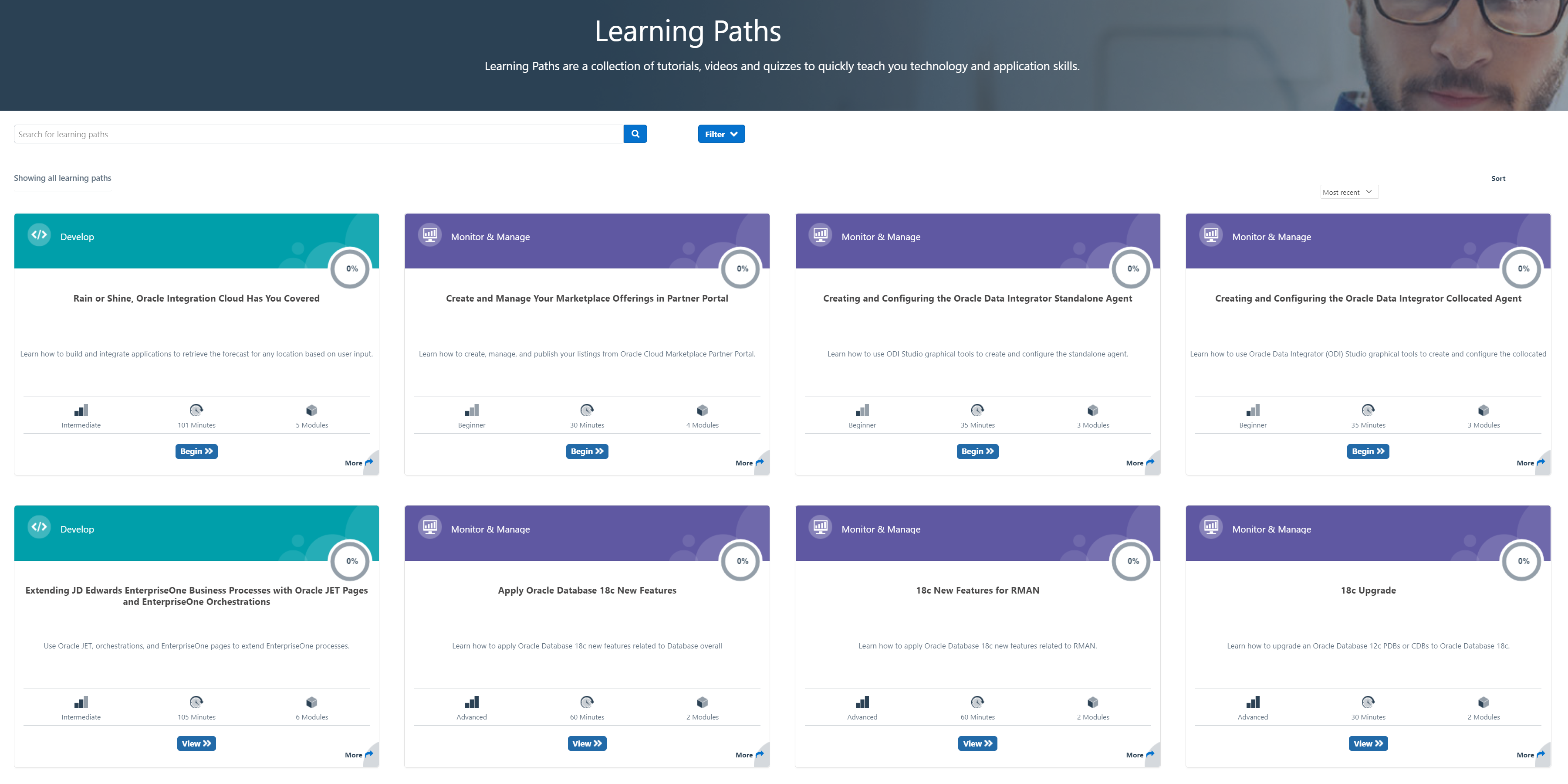
Oracle takes learning a step further by providing an active calendar of learning events. With online and in-person sessions, learners can benefit from expert advice in a variety of settings. Workshops take learners on an in-depth journey through highly complex topics. This incredible resource is one of many reasons that Oracle is a worldwide technology leader.
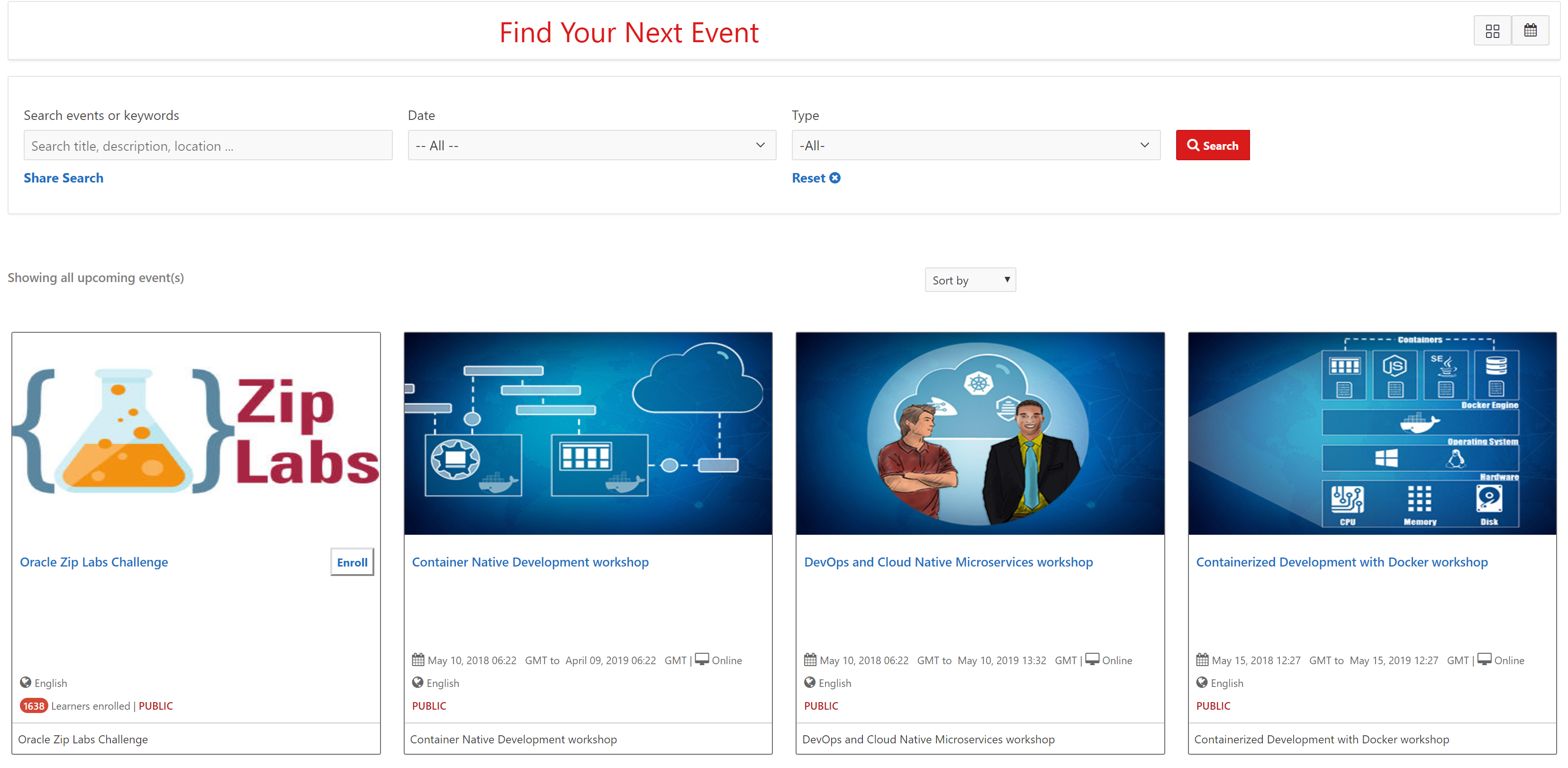
Google Ads
Pay-per-click advertising remains an effective marketing strategy for B2B SaaS companies because it has the ability to reach prospective customers searching for solutions online. Paid advertisements work in tandem with an organic strategy to pull in users from multiple channels. It’s important to understand that organic and paid traffic cannot replace each other. In fact, Google research revealed that 89 percent of traffic generated by ads is not replaced by organic clicks when the ad campaign is put on pause.
A great example of an effective Google Ads campaign comes from Zoho. The company provides many SaaS services, including email, accounting services and help desk software. When a user searches Google for SaaS hr help desk solutions, they’re presented with an ad that delivers an impressive amount of information in a small space.

In this short ad, users learn that Zoho offers a cloud-based, context-aware help desk solution. Plus, they are given multiple links to choose from, depending on where they are in the buying process.

If users search for online accounting software, they’re likely to find another Zoho ad. This one tells users about Zoho’s free trial offer and presents links to informative collateral such as blogs, case studies and customer testimonials. By integrating their Google Ads campaign with content marketing strategies, Zoho is able to lead customers down the buying funnel at their own pace.
Calls to Action
If you want your users to take action, you have to ask. Calls to action are an essential piece of any software marketing campaign because they lead readers to other collateral that might interest them. A CTA strategy can be employed within a blog post, landing page, or other digital asset. A typical user experience might look something like this:
- The user arrives at a blog page via a search engine results page.
- The user reads the article and sees a CTA at the bottom of the page.
- Low-quality leads exit the page. High-quality leads click the link and move further down the funnel.

Salesforce uses a CTA strategy that targets users at multiple stages of the buying process. For example, at the end of a blog post about improving customer experience, readers are prompted to download an eBook on customer service.

Another blog post about a specific Salesforce feature ends with a CTA that directs users to a free elearning course. A CTA on another post leads to a registration page for an upcoming Salesforce event. Importantly, each CTA is matched to the content of the blog post it appears in. The more relevant the CTA is to the content it appears in, the more likely users are to click on it. These examples show that Salesforce clearly understands their customer buying journey.

Social media is tricky to leverage in a B2B strategy because most users aren’t browsing their feeds with the intention of learning about business services. LinkedIn is the exception. Users visit the site to discover emerging trends, read the latest news and interact with their professional networks. Software companies can leverage the platform to deliver content, share insights and engage with potential customers on a more personal level. Using marketing automation software, companies can leverage LinkedIn alongside their other content strategies.

IBM Analytics offers a perfect example of how a LinkedIn Business page can be an effective marketing tool. In addition to information about the company, visitors find a stream of content, including blog articles, infographics, videos, animated gifs and more.

Importantly, LinkedIn makes it easy for users to start a conversation on each post and gives them the option to share content with their network. This strategy establishes the company as a subject authority while simultaneously spreading its message to a broader audience.
Conclusion
Software companies need to assess their marketing strategies frequently to ensure they’re evolving with emerging trends.
The examples in this eBook demonstrate the variety and complexity of the marketing strategies that have proven successful in 2018, but they are neither comprehensive nor set in stone. Just as the software industry is in a state of constant change, so is the world of digital marketing. A modern blog is much more sophisticated than a blog written five years ago.
Companies that effectively leverage a multichannel approach to marketing are better equipped to thrive in the modern marketplace.






